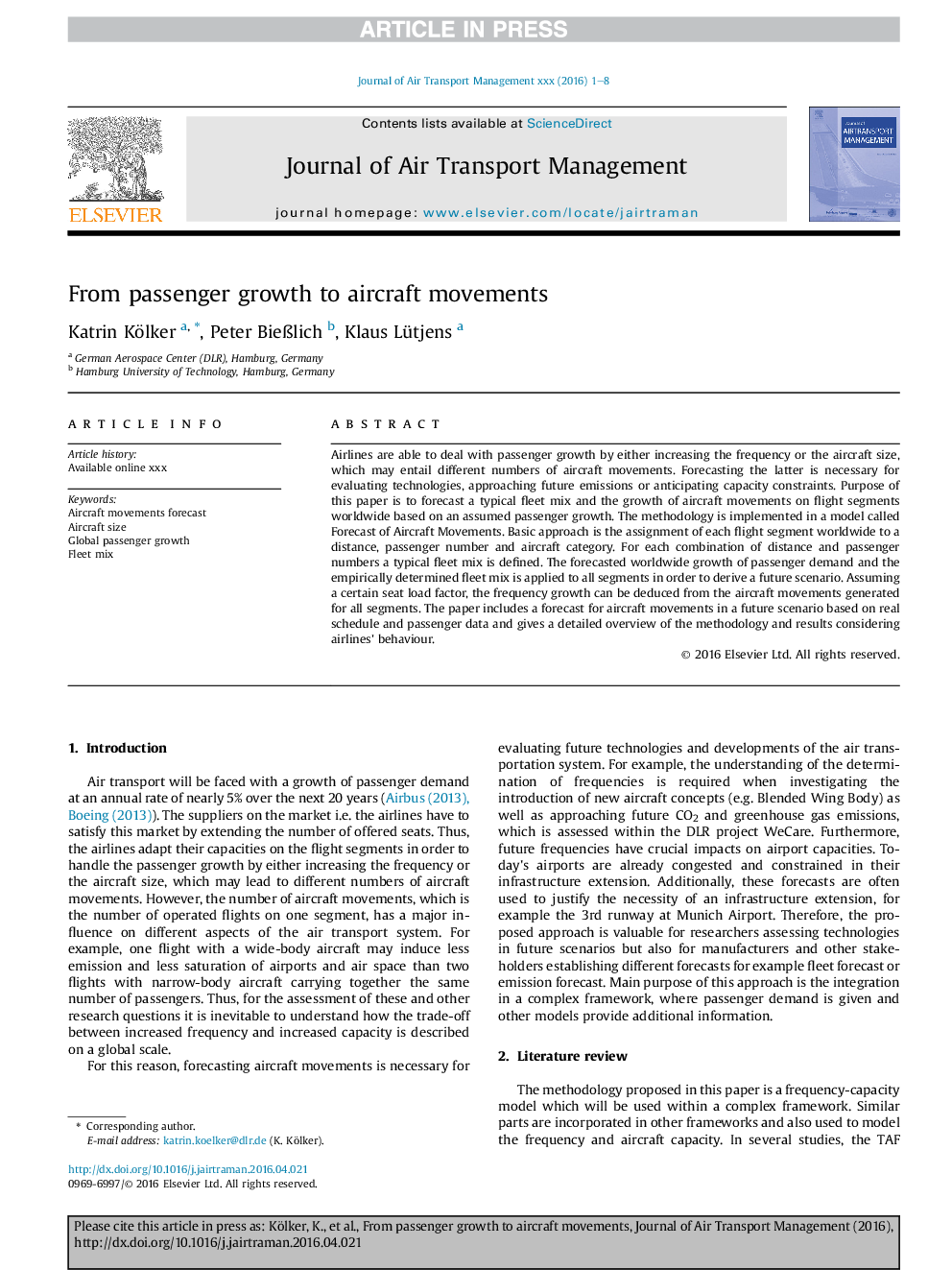| Article ID | Journal | Published Year | Pages | File Type |
|---|---|---|---|---|
| 5111559 | Journal of Air Transport Management | 2016 | 8 Pages |
Abstract
Airlines are able to deal with passenger growth by either increasing the frequency or the aircraft size, which may entail different numbers of aircraft movements. Forecasting the latter is necessary for evaluating technologies, approaching future emissions or anticipating capacity constraints. Purpose of this paper is to forecast a typical fleet mix and the growth of aircraft movements on flight segments worldwide based on an assumed passenger growth. The methodology is implemented in a model called Forecast of Aircraft Movements. Basic approach is the assignment of each flight segment worldwide to a distance, passenger number and aircraft category. For each combination of distance and passenger numbers a typical fleet mix is defined. The forecasted worldwide growth of passenger demand and the empirically determined fleet mix is applied to all segments in order to derive a future scenario. Assuming a certain seat load factor, the frequency growth can be deduced from the aircraft movements generated for all segments. The paper includes a forecast for aircraft movements in a future scenario based on real schedule and passenger data and gives a detailed overview of the methodology and results considering airlines' behaviour.
Keywords
Related Topics
Social Sciences and Humanities
Business, Management and Accounting
Strategy and Management
Authors
Katrin Kölker, Peter BieÃlich, Klaus Lütjens,
